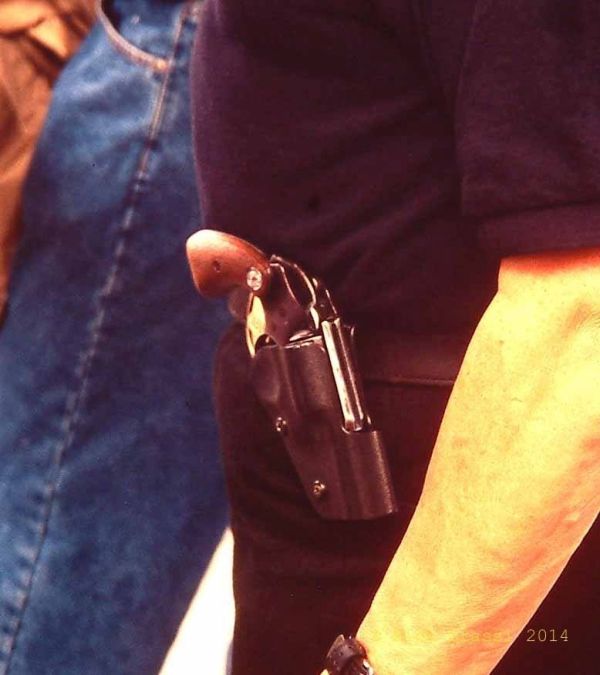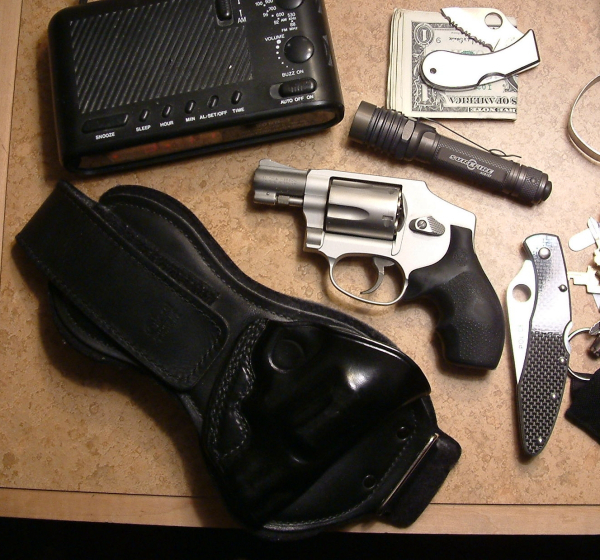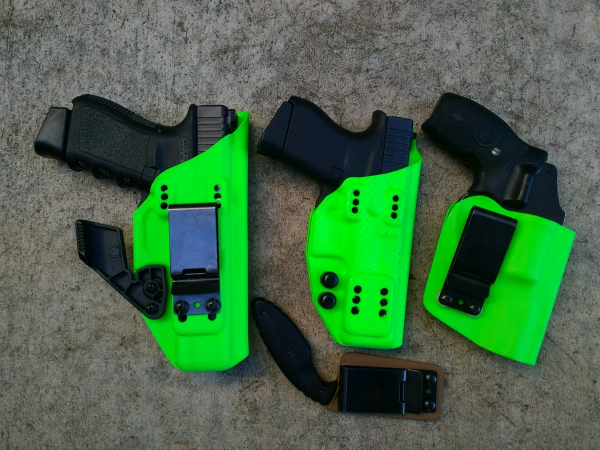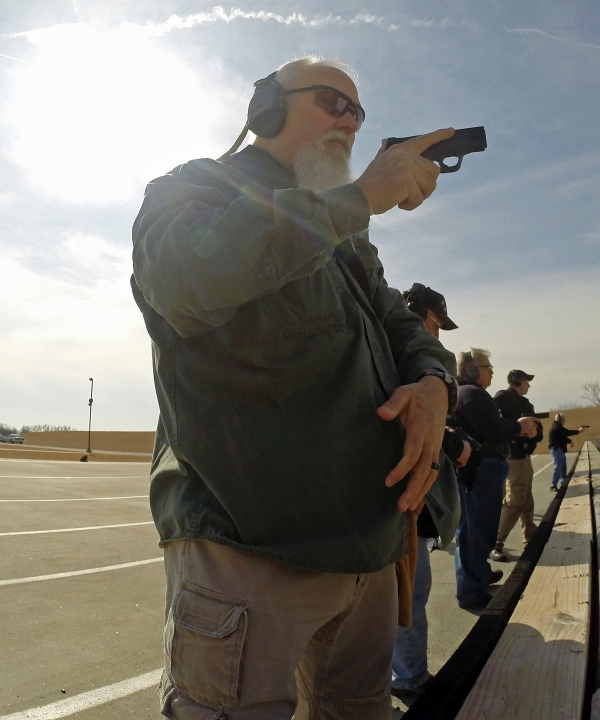 |
The common wisdom – seemingly a contradiction in terms – is that you always carry the gun (and other gear) in the same location on your body, all the time, no exceptions. This was recently recalled by peace officer/instructor Greg Ellifritz when responding to a concealed carry piece he highlighted in his must-read “Weekend Knowledge Dump” on his website.
The story upon which he made his comment was a collection of tips for people new to the concealed carry lifestyle. It consisted of generally good advice. The part of most interest to me was the comment he posted below the link. The typical injunction he responds to is “carry in the same place all the time so you won’t be searching for the gun.”
“I’m not adamant that my students always carry their gun in exactly the same place. I carry my own gun in different locations depending on threat level and mode of dress. I’ve always been able to find my gun when I needed it. Before I leave the house, no matter how I’m carrying the gun, I practice three to five “mock draws.” I clear concealment, get a firing grip on my handgun and defeat whatever retention my holster has.
“I don’t actually pull the gun out of the holster (that’s the easy part) so I don’t feel the need to unload the gun. This isn’t a full practice session, it’s just a way to build neural pathways and make sure you can get to your gun when you need it.”


Maybe someone has, sometime in the deep, dark past, lost a fight due to inability to find the handgun. I’m not sure I’ve ever heard one way or the other. It just “seems to make sense.” Except that it doesn’t. While “dress around the gun(s)” is always Plan A for me, there are many times when I’m compelled to abandon Plan A due to circumstances beyond my control. That’s when we need a strong Plan B, Plan C and so on. I’ve recently had experience with alternative plans due to a protracted medical situation. Fortunately, it wasn’t my first time. In fact, preparing as Greg describes reminds me of a situation I faced early in my disjointed police career.
I’d moved into a small town agency to “make do” until we could leave that region. The chief, a retired state trooper, was deeply into the “we all must be exactly alike” mindset. He insisted on the same Hume Jordan Trooper duty holster, with thumb break strap, and double dump box for spare ammo on the same gun belt . . . you get the picture.
It was a holster system I’d never worked with. As I was already aware that it was likely I’d draw the revolver thousands of times without firing a shot for every time I drew to one or more hits, I intensively – daily – practiced the drawing of the gun without firing. It was a scheme that paid off in the few short months I was in that agency and it was a habit that followed me since. As Greg describes, the time is consumed in going from zero to full firing grip (and holster retention devices deactivated) – not in pulling the gun into line and pressing out. It also alerts your brain to the location of the sidearm if it’s not where it normally is . . .


Sometimes you have to alter the preferred location of carry. I’ve used pocket carry, ankle carry, cross draw/shoulder systems and more. Peace officer/ace instructor Chuck Haggard has recommended front/inside the waist (“appendix”) and prefers gear from quality makers, like Tom Kelley at Dark Star Gear and Spencer Keepers (also an instructor). It seems we should examine these options as we look at ‘nonstandard’ or contingent carry methods.
Something else that makes sense is to have the gun – a gun – when it’s needed. In the same “Weekend Knowledge Dump” installment, Greg had a piece from the SWAT Magazine website about “J-frame state of mind.” That makes sense too, adjusting your mindset to those times you’re stuck with something less than optimal and understanding that just because something’s not ideal, it doesn’t mean it’s time to quit.
We’ll take a look at the methods of carry and the gear to facilitate that as we go through the year, in an effort to “keep you posted.”
- - Rich Grassi